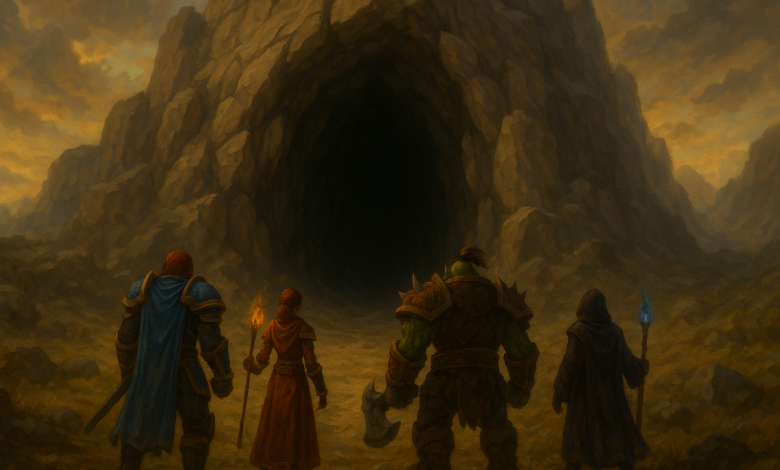World of Warcraft: The Most Overlooked spells

When people talk about World of Warcraft gameplay, the conversation usually circles around DPS rotations, big healing numbers, or tanking cooldowns. And sure, those things matter a ton — they make or break raids and dungeons. But lurking in the background of every class toolkit are abilities that don’t look flashy on a damage meter or healing chart. They don’t crit for 200k, they don’t chain-heal a raid, and sometimes they don’t even seem worth putting on your hotbar. Yet, when the right moment comes? These utility spells are absolute game changers! In many ways, utility is what separates the great players from the good ones. Being able to use the right spell at the right time can be the difference between your group thinking you’re a pretty neat part of the group to a vital one.
Spells are one part of the kit, but if you really want to get the hang of the game then you will need plenty of resources, and we’re not talking just gear! If you want help with this, then know you can safely buy WoW gold!
What Counts as Utility, Anyway?
Let’s define what we mean by “utility.” In WoW terms, utility spells are those abilities that don’t directly contribute to your primary role — whether that’s DPS, healing, or tanking — but provide some sort of advantage in the fight or in moving around the area. They’re the things that aren’t game changers at first glance but do prevent wipes, shorten fights, or help your team adapt.
Think of abilities like a Shaman’s Tremor Totem, a Mage’s Polymorph, or a Paladin’s Blessing of Freedom. None of those add raw numbers to your damage, but they can completely change the flow of a fight. Utility can mean crowd control, buffs, movement enhancers, interrupts, dispels, immunities, or even something as simple as summoning people to a dungeon. It’s the glue that holds groups together when things get messy!
Why Utility Spells Are Undervalued
So why do players often overlook utility? A few reasons:
- They don’t show up on meters. Damage and healing meters give instant feedback — utility doesn’t. That leads many players to undervalue these buttons.
- They’re situational. You may not need to use them in every pull, which makes them easy to forget in the heat of battle.
- They’re harder to master. Using utility well requires awareness of boss mechanics, group positioning, and sometimes even predicting what’s about to happen.
In other words, spamming Frostbolt all day is easier than deciding when to use a clutch Frost Nova. But the payoff? Immense!
Utility in Action: When the Small Buttons Save the Day
Let’s look at some concrete examples of how utility spells shine.
- Hunter’s Misdirection. On paper, it’s just a threat redirection tool. In practice, it’s the difference between a tank smoothly holding aggro on a big pull or a healer getting flattened by stray mobs. Great Hunters make dungeons buttery smooth with this spell!
- Rogue’s Smoke Bomb. Often forgotten outside of PvP, Smoke Bomb can negate boss mechanics or protect allies from ranged abilities. It’s sneaky (pun intended), but it’s incredibly clutch when used correctly.
- Priest’s Leap of Faith. Also known as “Life Grip,” this ability has saved countless players who stood in fire a second too long. Sure, it might get used for trolling sometimes, but when it saves a DPS from certain death? Legendary.
- Warlock’s Healthstones and Summoning Rituals. Healthstones might seem minor, but a free instant heal has saved entire raids. And let’s be honest, who doesn’t love a Warlock summoning taxi service?
- Monk’s Ring of Peace. A versatile utility button that can knock enemies away or zone off dangerous areas. In high Mythic+ keys, this can literally mean the difference between surviving a pull or wiping.
These spells don’t just help — they define high-level gameplay. Ask any top-end raider or Mythic+ runner, and they’ll tell you: utility often decides who clears content first.

PvP: Where Utility Rules the Day
If utility feels situational in PvE, in PvP it’s the star of the show. Damage and healing matter, of course, but arenas and battlegrounds are chess matches where utility is king. Interrupts, CC chains, mobility tools, and defensive cooldowns decide games far more than raw output.
Take a Druid’s Cyclone, for instance. It deals zero damage, but locking a healer out of the fight for six seconds can win a match outright. Or consider a Mage’s Spellsteal, stripping away powerful buffs like a Priest’s Power Infusion. These abilities highlight how in PvP, the most valuable spells aren’t always the ones lighting up your damage bar.
Mastering PvP utility often means learning every class’s toolkit, not just your own. Knowing that a Shaman can drop Grounding Totem to absorb your spell changes how you approach the fight. It’s a web of counterplays, and that’s what makes WoW PvP so exhilarating!
Utility Across Expansions
What’s fascinating is how Blizzard has adjusted utility spells over the years. In some expansions, utility bloated to the point where players had far too many situational buttons. In others, spells were pruned, sometimes leaving classes feeling stripped of flavor.
For example, back in Wrath of the Lich King, Paladins had blessings galore — Blessing of Kings, Blessing of Wisdom, Blessing of Might. Buff duty was part of their identity! Later expansions condensed or removed many of these, focusing more on active abilities like Blessing of Freedom or Sacrifice.
Similarly, Shamans once had entire toolkits of totems for every occasion — Tremor, Poison Cleansing, Windfury, Grounding, you name it. Over time, many were cut or streamlined. The trade-off? Less button bloat, but also fewer chances for players to shine with clever utility use.
Dragonflight has brought some of that utility back, with talent trees offering situational spells as optional picks. It’s a nice balance: players can customize their toolkit for specific content, while still keeping rotations clean.
Why Mastering Utility Sets You Apart
Here’s the thing: every decent player can learn their DPS or healing rotation. But not every player thinks to drop a timely crowd control, dispel a key debuff, or pop a defensive cooldown for a teammate. That’s why utility is such a skill separator!
Groups remember when someone saves the day. They might not remember who topped the damage meter on a trash pull, but they’ll never forget the Priest who gripped them out of lava at 2% health. Those moments build reputations.
In Mythic+ especially, knowing how to layer stuns, interrupts, and kiting tools makes dungeons dramatically easier. A coordinated group leveraging utility can punch far above their gear level. And in raids, proper use of external cooldowns (like a Paladin’s Blessing of Sacrifice) often decides whether a boss dies or lives at 1%.

In Conclusion
Utility spells are the unsung heroes of World of Warcraft. They’re not flashy, they don’t pad meters, and sometimes they sit forgotten on your bars. But when used at the right moment, they turn certain disaster into victory. They’re the lifeline, the clutch play, the little spark of brilliance that makes people cheer in voice chat.
So, the next time you’re staring at your hotbar, don’t just think about your main rotation. Ask yourself: what utility buttons am I forgetting about? Could that stun, grip, or totem save us down the line? Chances are, the answer is yes!
Mastering utility won’t just make you a better player — it’ll make you the kind of player others want to bring along again and again. And that’s worth way more than topping a meter. So dust off those forgotten buttons, keep an eye out for the perfect moment, and embrace the magic of utility!

